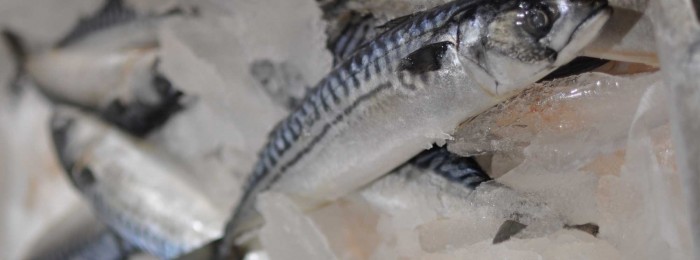01843 585310
info@kentandessex-ifca.gov.uk

01843 585310
info@kentandessex-ifca.gov.uk

Scomber scombrus Mackerel have a streamlined, slender body shape for fast swimming. Mackerel have two dorsal fins followed by small finlets running from the rear edges of the second dorsal and anal fins to the highly forked tail. Colouration consists of a deep blue-green colour on the upper half of the body with black stripe pattern across it, while the flanks are a silver blue and belly is silvery-white. This pelagic fish species are commonly found schooling in large numbers in waters up to 200 m deep and can grow to over 50 cm in length, but is more commonly found up to 40 cm.
Mackerel spawn in the central North Sea producing planktonic eggs in May- July which remain in the plankton as larvae. Mackerel spend most of the year in deeper water away from coastal areas but move inshore during the mid and late summer months. Schools of mackerel are known to make extensive annual migrations in search of appropriate zooplankton and other prey species to feed on.
Many species of mackerel can be found worldwide however in the KEIFCA district two stocks of Scromber scrombus are seen with the North Sea stock growing larger than the channel stock seen in the south of the district. Adult mackerel feed on various pelagic crustaceans and small fish including herring, sprat and sandeel while they themselves are predated on by larger pelagic fish species, marine mammals and birds.
North Sea stock (ICES sub area IVc) minimum size is 30cm
Other Areas (ICES sub area VIId) minimum size is 20cm
© Kent & Essex IFCA 2025 - All Rights Reserved | Privacy Policy